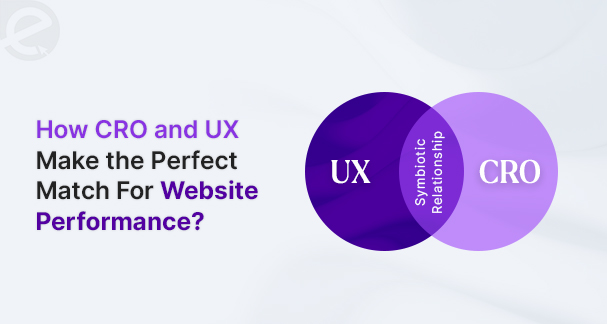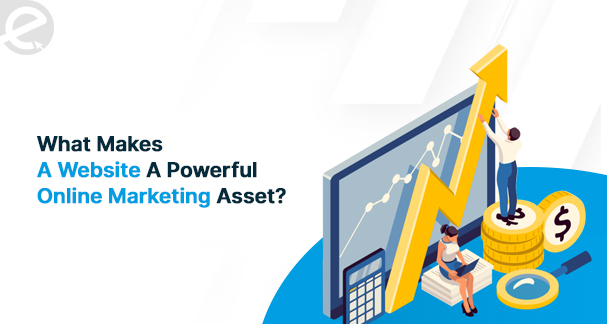
We Develop Websites Keeping Marketing in Mind
Steps To Optimize Product Category Pages On E-commerce Websites
 Apr. 07, 2023, 10:17 AM
Apr. 07, 2023, 10:17 AM- By Eclick Softwares and Solutions

Category pages of E-commerce websites bridge the homepage and product pages. Customers gather a flexible and enjoyable shopping experience through the Category Pages. At the same time, these pages influence SEO rankings.
Targeted keywords are mainly for organizing content and assisting search engine crawlers in the Category pages to detect the purpose of the E-commerce website. A sanguinely optimized Category page with the right set of keywords is a necessary part of the sales funnel to drive more traffic and ensure a smooth shopping experience for customers. Category pages are to be at top of the website hierarchy. These pages should be accessed within a few clicks from the homepage.
Best Practices to Implement and Optimize E-commerce Category Pages
SEO works become the heart and source towards optimizing category pages to improve ranks and traffic. Only then do the pages match user intent and guide the shoppers and search engines to scroll and crawl better to get familiar with the structure of the E-commerce store.
1. Setting Up the Right Site Structure
The users have to find their searches, so the website structure should be based on the golden SEO rule – the pages have to be within three clicks from the homepage. The hierarchical website structure states the homepage at the top of the hierarchy, and two or three levels below before reaching the bottom of the hierarchy or the product pages.
Every best website structure includes the elements like a clean
navigation bar, internal links following logical paths and the information filtering ability into the additional subsets of the pages. A visitor could be anywhere on a website, but they should easily find their desired products.
2. URL Optimization on E-commerce Website
Short, keyword-rich URLs are SEO–friendly to meet the searchers’ needs. The “slug†coming after the domain extension describes the representative product page, which has to be appropriate. Clean URLs help the users to see at a glance what the products are. If URLs are expanding to several pages or filters are used, then canonical URLs should be correctly set up.
3. Category Headings Optimization
Tweaking category headings is the step to optimizing E-commerce category pages for search engines. Google determines the page's contexts by using the category headings. Users know they are at the right place by looking at the category headings. Creating relevant category headings is a must, by using the keywords related to the product page. Fun and engaging category headings should also provide the context to the product page so the search engine can crawl and show the result as the users want. It helps the category pages to rank in the right search results.
4. Faceted Navigation For Making the Search Easier
At the enterprise level, E-commerce stores contain a lot of product categories. Integrating sort and filter abilities on the E-commerce website helps the users to look for their searches easily. It saves the users’ time and enhances their experiences.
Faceted navigation is one of the reasons for Google to rewrite page titles on the search engine results pages. Here, the solution is No-Indexing a few variations of the faceted navigation so the search engine is not confused.
5. Integrating Breadcrumb Navigation
Breadcrumb navigation should be added to the website while optimizing category pages for E-commerce to benefit both the search engines and the users. The users can know where they are on the E-commerce website, so they are not lost while navigating back to the previous page. On the other hand, with the breadcrumbs, the search engines get the website’s hierarchy to understand the most important pages on the site.
In fact, breadcrumb navigation lowers the bounce rates so the users can click on the link within the navigation to get back, apart from clicking on the browser’s back button. With the breadcrumb navigation being implemented, the category pages can be optimized for E-commerce so the users can have a better experience.
6. Creating Meta Data by Using Relevant Keywords
The title–tag is the influential on-page element setting up the product category page's theme and keyword. On being combined with meta description, it influences the search terms the page is ranking for. The optimal title tags make use of the main category keyword together with two more crucial features. Meta descriptions educate the users their search is the link to the category page, hence should be optimized as they determine the click-through rates.
7. Creating a Relevant Product List
Correctly grouping the products, and showing the popular ones on the first product page by paginating the categories within 12–20 products per page helps to increase sales. Furthermore, it is a way out for improving user experiences and increasing SEO rankings, as the topical relevance is better maintained.
8. Highlighting Products With Media Contents
Shoppers will first look at the product photos and then videos to envision what the products are looking like and how will they address their pain points before purchasing. In fact, optimized images are great for SEO.
To optimize the images, high-quality images are to be created in the ideal size, format and resolution for increasing engagement. Labelling the images accurately with metadata for the search engine bots to read them for understanding the page's context is even a part of image optimization. Image names and alt. text names should be connected to the page's overall theme, along with the important keywords.
9. Adding Relevant Text
In each category page, there should be a naturally inserted keyword through relevant texts, in the page titles, product descriptions, page titles and more. Using texts for displaying significant names, links, and category page contents is more purposeful.
Quality content, say around 300 words per product is suitable for product category pages. These helpful, descriptive, and relevant texts make it easier for users to navigate the products or categories they are looking for.
10. Improving UX Design
UX design is for creating an organized and aesthetic E-Commerce site for the users to have meaningful and relevant experiences. An optimized product category page allows the users to –
• Browse the products and check the product information under one head
• Comparing products and prices from multiple categories and exploring other additional options
• Adding multiple products to carts without opening all individual product pages.
Here is how UX helps with E-commerce optimization and sales –
a. The Right Layout
Top products and offers should be pushed above the fold for optimizing the product category pages. When the customers first land on the website, then the screen real estate should be visible since this area accounts for maximum viewers' attention.
Ideally, horizontal and vertical layouts should be mixed. Horizontal layouts work well when a few products from numerous categories are to be shown. But vertical layouts are perfect to display products from the same categories.
b. Personalized Filters
Filters in E-commerce websites break down categories into smaller and more relevant niche product groups. Compared to scrolling through the long list of categories, filtering is faster and it improves user experience. For the shoppers to have a personalized product search, better is to start with the basic or most essential product categories.
c. Recommendations and Variations
Product category pages have two goals – to lead the customers to buy the product or view another product, or both. Data–driven product recommendations help in improving conversion rates and increasing the average order value along with the average count of items per order.
Shoppers will easily find their search and also find the alternate options they might be interested in when product variations are included.
d. Wishlist
Wishlist indicates the collections of desired products the customers save to their user accounts. They are interested to buy but the immediate intent is missing. Wishlists lessen shopping cart abandonment. The users return once they are ready for purchase.
Infact, wishlists influence marketing decisions – maybe, customers would buy sooner if they found out the price of products on their Wishlist are at a discount.
e. Browsing History
Customers are checking out uncountable product images daily. When they have the access to browsing history, they can recall the products they have browsed, and maybe think about completing the purchase. As such, there are no hassles of relocating what they have already looked at.
Both UX and SEO are vital – search engines evaluate web pages on a lot of ranking factors, chief among which include user intent, relevance, and user experience. The E-Commerce store's UX design should be aligned with Google's terms and conditions and even topple its expectations.
11. Conversion Optimization Improvements
Category pages have the main goal of funnel visitors to the product page they are looking for and to complete the purchase. So, the category pages are the funnel pages. Category page recommendations can increase revenue by 1.3%. Even, when the best-selling products are displayed on the category pages, then it increases the customer lifetime value.
To boost conversion optimization, the best distilling options are promoting the popular categories, enabling the shoppers to quickly compare the products, maintaining clear CTAs and using sorting filters for showing relevantly filtered products. Optimizing category pages for mobile shoppers encourages more shopping using their smart devices.
12. Using Pagination
Pagination is easier for users to look for items that are placed on the respective pages. If the infinite scroll has been implemented, then the rel/next prev links should be there in the code, and the unique URLs should load in the URL dynamically with the users scrolling through by using history API.
For every E-commerce website, category pages are important. No choices are left when the aim is optimizing the category pages. By properly optimizing the category pages, better rankings can be achieved in search.
Â
Related Blog
- By Eclick Softwares and Solutions
- November 21, 2024
Why Good UX Design Mean B ...
UX creates a verified impact on CRO for a website. The users ...
Read More- By Eclick Softwares and Solutions
- November 11, 2024
How Important is a Websit ...
Where the customers land and browse to find their needed pro ...
Read MoreSearch Blog...
Recent Posts
Eclick Services







